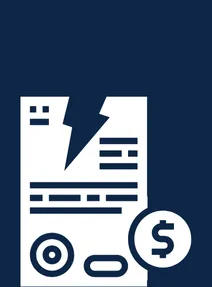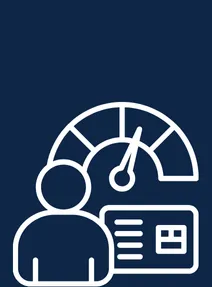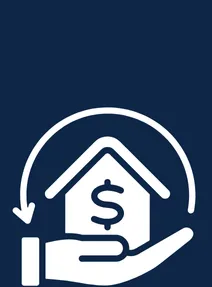Shredding or Hair Cut of Income
Shredding or Hair Cut of Income
What Is Shredding (Income Haircut)?
Lenders often reduce how much of your income they count toward borrowing power
—especially if it’s not guaranteed or consistent. This is called “shredding” or
applying an “income haircut.”
It’s part of responsible lending obligations to ensure you can comfortably meet
repayments even if your income fluctuates.
Which Incomes Are Shredded?
Lenders may reduce by 10–40%, or entirely exclude, certain income types such as:
Bonuses
Commissions
Overtime
RSUs (Restricted Stock Units)
Dividends and investment income
Overseas income
Foreign exchange income/laxers
These incomes are seen as less stable than base salary.
Example of Income Haircut
Suppose you earn:
$100,000 base salary (100%)
$20,000 bonus (counted at 80%)
$10,000 commission (counted at 70%)
Your assessed income becomes: $100,000 + $16,000 + $7,000 = $123,000, not the
full $130,000.
Why Do Lenders Do This?
Lenders must follow responsible lending rules under the National Consumer Credit
Protection Act, ensuring loans are affordable under various scenarios—especially if
incomes fall
Lender Variations
Some lenders include 100% of overtime for certain roles (e.g., nurses, police)
Commission and bonus income often require a 12–24 month history and may
be accepted at 80%
RSUs and foreign income may be excluded or heavily discounted unless in
private banking
Tips to Strengthen Your Application
Even if you have income that’s subject to a haircut, you can still improve your
borrowing profile
Maintain consistent income streams (bonuses or commissions paid regularly
are viewed more favourably)Minimise liabilities (e.g., credit card limits or personal loans)
Provide complete documentation — payslips, tax returns, group certificates
Use a mortgage broker to match you with a lender that accommodates your
income type
Final Thought
Income shading affects your borrowing capacity—that’s your ability to get the loan
you want.
To make the most of what you earn:
1. Speak with your broker to match your income type to the right lender
2. Provide at least 12 months of payslips or statements (sometimes 24 months)
3. Choose a lender known to accept your income types
An offset account is a powerful tool for reducing home loan interest and speeding
up your mortgage repayments. It’s especially helpful for borrowers who keep regular
savings or cash flow in their account.
Related Topics
The cooling-off period is a brief timeframe after signing a property contract when buyers can cancel the deal, often with little or no penalty.
A break fee (or break cost) is a charge you may incur for ending a fixed-rate loan before the agreed term.
By linking a transaction account to your home loan, an offset account helps reduce the interest charged on your loan balance.
Understand how lenders determine your borrowing power and what factors impact loan approval. Learn how to improve your eligibility and maximise your home loan options.
Discover the five key factors lenders evaluate when assessing loan applications and learn how each plays a role in securing mortgage approval.
A high LVR could mean extra costs, while a low LVR can save you thousands. Find out why lenders care so much about this number.
What Is Shredding (Income Haircut)?
Lenders often reduce how much of your income they count toward borrowing power—especially if it’s not guaranteed or consistent. This is called “shredding” or applying an “income haircut.”
It’s part of responsible lending obligations to ensure you can comfortably meet repayments even if your income fluctuates.
Which Incomes Are Shredded?
Lenders may reduce by 10–40%, or entirely exclude, certain income types such as:
Bonuses
Commissions
Overtime
RSUs (Restricted Stock Units)
Dividends and investment income
Overseas income
Foreign exchange income/laxers
These incomes are seen as less stable than base salary.
Example of Income Haircut
Suppose you earn:
$100,000 base salary (100%)
$20,000 bonus (counted at 80%)
$10,000 commission (counted at 70%)
Your assessed income becomes: $100,000 + $16,000 + $7,000 = $123,000, not the full $130,000.
Why Do Lenders Do This?
Lenders must follow responsible lending rules under the National Consumer Credit Protection Act, ensuring loans are affordable under various scenarios—especially if incomes fall
Lender Variations
Some lenders include 100% of overtime for certain roles (e.g., nurses, police)
Commission and bonus income often require a 12–24 month history and may be accepted at 80%
RSUs and foreign income may be excluded or heavily discounted unless in private banking
Tips to Strengthen Your Application
Even if you have income that’s subject to a haircut, you can still improve your borrowing profile
Maintain consistent income streams (bonuses or commissions paid regularly are viewed more favourably)
Minimise liabilities (e.g., credit card limits or personal loans)
Provide complete documentation — payslips, tax returns, group certificates
Use a mortgage broker to match you with a lender that accommodates your income type
Final Thought
Income shading affects your borrowing capacity—that’s your ability to get the loan you want.
To make the most of what you earn:
1. Speak with your broker to match your income type to the right lender
2. Provide at least 12 months of payslips or statements (sometimes 24 months)
3. Choose a lender known to accept your income types
An offset account is a powerful tool for reducing home loan interest and speeding up your mortgage repayments. It’s especially helpful for borrowers who keep regular savings or cash flow in their account.
Related Topics
The cooling-off period is a brief timeframe after signing a property contract when buyers can cancel the deal, often with little or no penalty.
A break fee (or break cost) is a charge you may incur for ending a fixed-rate loan before the agreed term.
By linking a transaction account to your home loan, an offset account helps reduce the interest charged on your loan balance.
Understand how lenders determine your borrowing power and what factors impact loan approval. Learn how to improve your eligibility and maximise your home loan options.
Discover the five key factors lenders evaluate when assessing loan applications and learn how each plays a role in securing mortgage approval.
A high LVR could mean extra costs, while a low LVR can save you thousands. Find out why lenders care so much about this number.
© 2025 Estate Seeker.com.au - All Rights Reserved. Content on this site is for educational purposes only.
Always consult with a professional before making any investment decisions.









